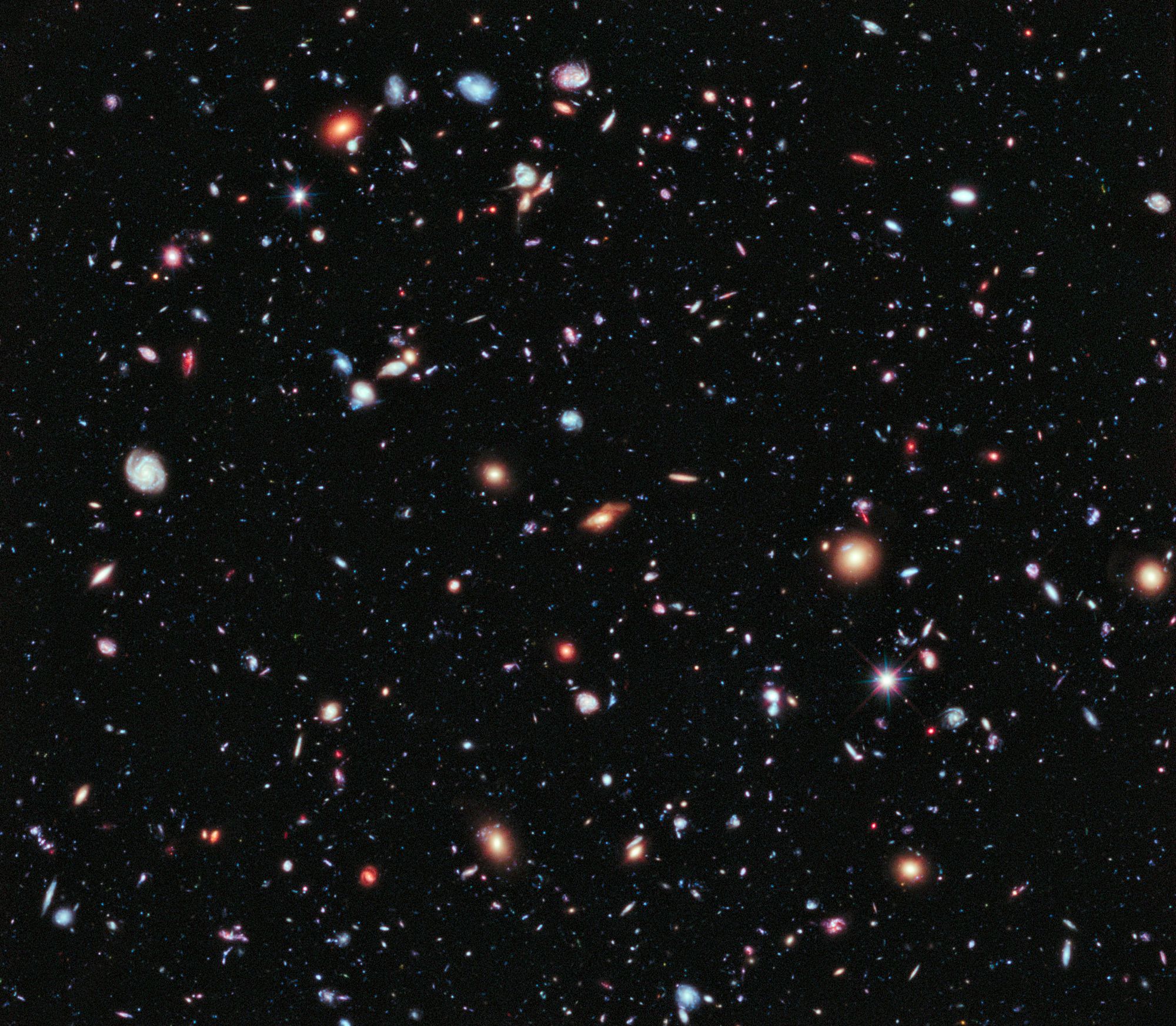The Real Life Conundrum of Counting Galaxies
Galaxies - these sprawling, star-studded entities that adorn our Universe - provoke a particularly intriguing question: Just how many of these celestial collectives are there?
Trying to count them seems like an overwhelmingly difficult task, bordering on the impossible. For one, we're dealing with unimaginably vast numbers. When your tally is venturing into the billions, it's no longer a matter of simple arithmetic. Further complicating matters are the limitations imposed by our observational instruments.
Two factors define a telescope's prowess. One is its aperture, that's to say, the diameter of its primary mirror or lens. The other is its location - above our atmosphere is ideal for avoiding any optical distortions caused by Earth's atmospheric meddling.
A rather poignant example of this principle at work can be seen in the Hubble eXtreme Deep Field (XDF). This image, no less than a tapestry of cosmic history, was crafted by piecing together a decade's worth of photographs taken by the Hubble Space Telescope.

Now, here's something to consider: The area captured by the XDF, while seemingly insignificant, held the Hubble's gaze for a cumulative total of 50 days, as stated by NASA. If you cover the moon with your thumb held at arm's length, this area would be roughly the size of the pin's head. By gathering the faint, ephemeral whispers of light over many hours of observation, the XDF pulled back the cosmic curtain on thousands of galaxies - some relatively nearby, others unfathomably distant.
This achievement was the deepest glimpse into the Universe we had ever achieved at the time. And if this minuscule slice of sky is teeming with thousands of galaxies, it makes us pause to wonder: how many more galaxies are waiting to be discovered in the unexplored celestial canvas?
Estimates vary among experts, but there seems to be a consensus that our Universe is home to somewhere between 100 billion and 200 billion galaxies. That's according to Mario Livio, an astrophysicist at the Space Telescope Science Institute in Baltimore, Maryland. And our knowledge of the cosmic frontier is on the cusp of another leap forward.
Enter the James Webb Space Telescope. This marvel of engineering and astronomy promises to unlock even more secrets about the early galaxies in our Universe, as reported in The Astrophysical Journal. The Universe, it seems, has many more stories to share with us, and we're just turning the page.
The story of our Universe is a tale of epic proportions, filled with wonder, mystery, and more than a little bit of awe. When we consider the sheer number of galaxies we've discovered, our Earth seems like an infinitesimally small part of an unimaginably large tapestry. And yet, every star, planet, and galaxy we've identified represents just a fraction of what's out there.
For a moment, let's consider the work of the Hubble Space Telescope and its remarkable contributions to our understanding of the Universe. We've already discussed its Hubble eXtreme Deep Field (XDF) image, which allowed us to glimpse an astonishing number of galaxies. But that small pinprick of the sky observed by Hubble represents only a tiny fraction of the Universe as a whole.
So, where does this leave us in terms of a count? If a minuscule piece of the sky, when observed closely and diligently, yields thousands of galaxies, just how many more might be strewn across the cosmic expanse we've yet to probe?
As mentioned earlier, the estimations gravitate around a mind-boggling range of 100 billion to 200 billion galaxies, as stated by astrophysicist Mario Livio. But here's where things start to get exciting – those are merely the galaxies we can observe right now. We're on the threshold of a new era of exploration, with the James Webb Space Telescope continually enhancing our cosmic perspective.
As the successor to the Hubble Space Telescope, the James Webb peers deeper into space than we ever have, its gaze trained on the early Universe. It's a testament to human ingenuity and our relentless pursuit of knowledge that we've managed to create a device capable of such a feat.
The next chapter in our astronomical narrative, written by the James Webb Space Telescope, is undoubtedly shifting our perception of the Universe and our place in it. The potential number of galaxies waiting to be discovered might be far larger than we can currently comprehend. And as our count of galaxies continues to rise, it stands as a constant reminder of just how much of the cosmos lies in wait, ready to be explored and understood. The Universe is a grand and enigmatic stage, and we've only just begun to pull back the curtain.
